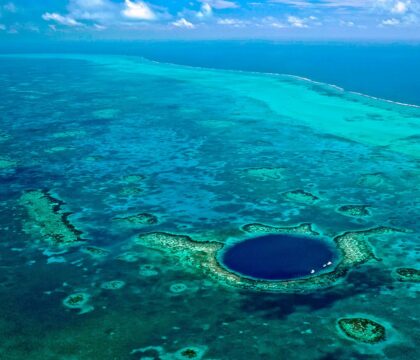February 5, 2014 • News Announcements, Program Updates
Our biggest event this fall was a visit from representatives of the Panamanian Authority on Aquatic Resources, ARAP, who came to collect the data necessary to declare Armila a Special Reserve Zone. Though members of the agency have wanted to protect the area for years, Morrison Mast and I were both thrilled and surprised when our offer of research support sparked a discussion of a fully mobilized research team, marking an important step on the path toward federal protection.
Often, when federal agencies get involved in sea turtle conservation, the first step is to prohibit the consumption of sea turtles and their eggs by locals. But here, long-standing taboos already keep leatherback turtles and their eggs from being part of the menu—”They bring diseases.” “If you touch a turtle you might get stuck and taken out to sea.” “If you mistreat a turtle, it will find you later and flip your canoe.”
So what will Special Reserve Zone status really do?
An internationally recognized reserve status would help ARAP in its fight against poaching and illegal fishing. Boats come from across the Colombian border to fish in Guna Yala’s waters, shipping their catches to places as far away as Medellín. They deplete the fish stocks on which local communities depend for sustenance, and the nets they use catch turtles as well. If Armila becomes a Special Reserve Zone, ARAP and other agencies could allot more resources to its protection, which would help the community as well as marine species.
[IMAGE]
Reserve status would also reinforce local conservation values with federal law for the long-term. With so many changes already taking place in Armila—electricity, satellite television, and, soon, Internet—it’s important that local protection of sea turtles stay in place.
Finally, this status would give local eco-tourism efforts an extra boost. When asked about eco-tourism, a friend from town commented that things can get economically difficult in Armila, and a regular flow of income would be helpful.
During ARAP’s visit, we brought local leaders from sports teams, community co-ops, schools, and cultural organizations together with ARAP’s sociologists and biologists to discuss what a ‘reserve zone’ would mean for the town. Discussion started at 10:00 AM and lasted into the evening. The next day, local guides took ARAP researchers to map the proposed borders for the reserve. By the end of the visit, additional surveys and interviews provided us with data necessary for a solid proposal for reserve status.
[IMAGE]
Occasionally, some translation was needed between the two groups. When an ARAP researcher began drawing a map of the proposed borders on the whiteboard, locals insisted he redraw it from their perspective: with the land at the bottom of the board leading to the ocean on the top of the board. But overall, the visit was a great example of people from very different backgrounds coming together through a shared desire to protect other species.
While much paperwork remains before the Armila reserve appears in Panama’s guidebooks, the pieces have been set in motion.




